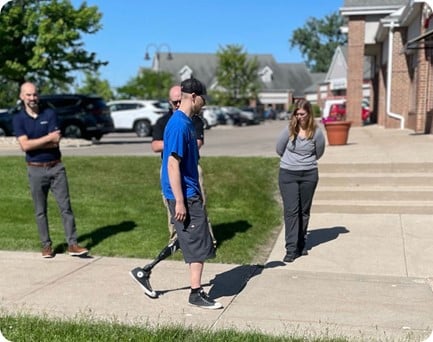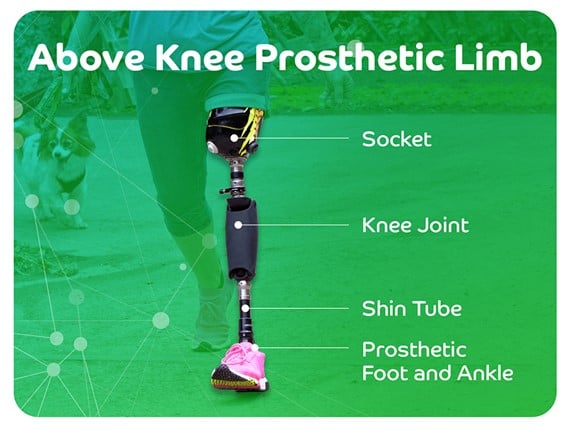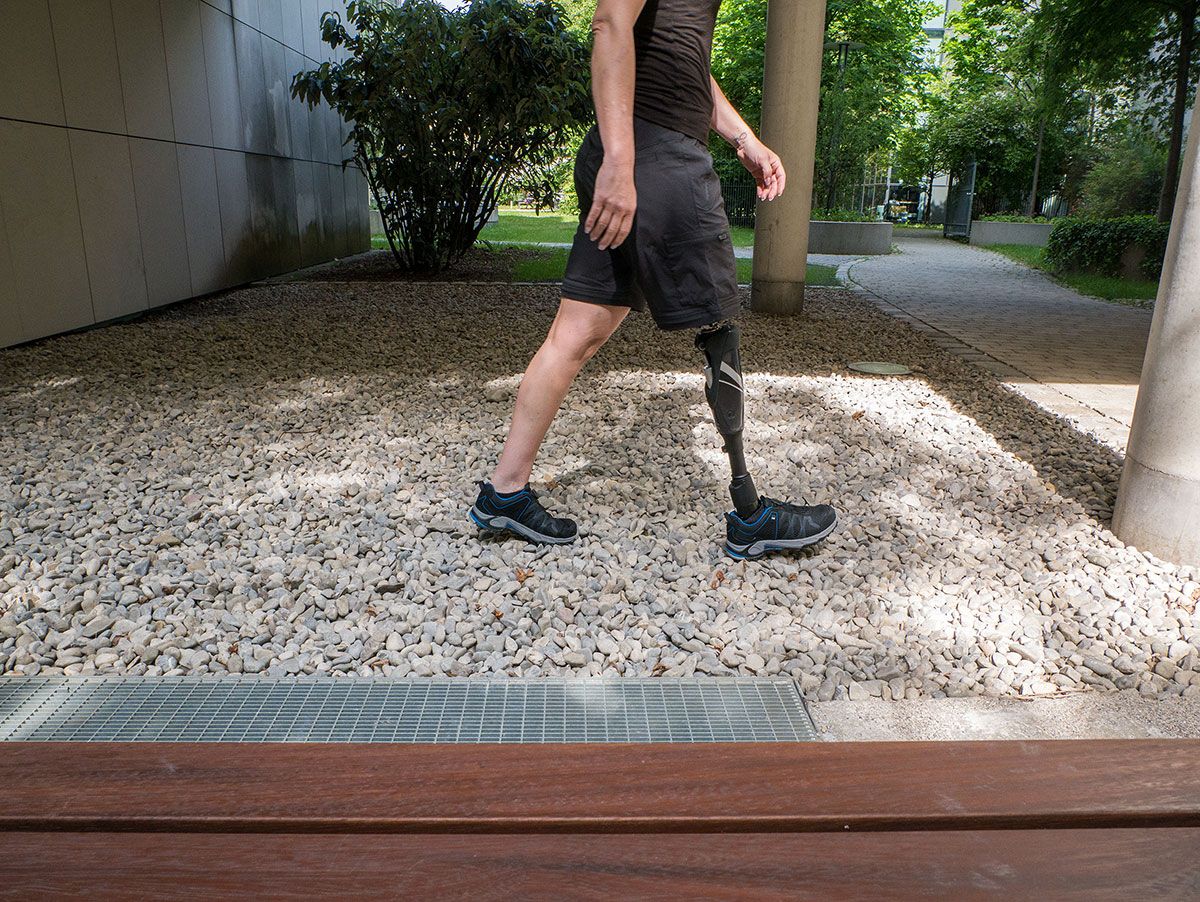Our Above Knee Prostheses Mimic the Natural Body Using Performance Response Technology (PRT)
Our goal is to provide innovative prosthetics based on biomimetic design principles that work perfectly in sync with the body to provide efficiency of movement and function. We call this type of design Performance Response Technology®, the next generation of biomimetic prosthetics. Biomimicry is a practice that learns from and mimics the strategies found in nature to solve human design challenges.
We actively engage in the science of gait and focus our efforts on designing products that are based on a sound understanding of these principles.
An above-knee prosthesis is also called a transfemoral prosthesis.
Our above knee prosthetic devices include a variety of offerings:
• A fully integrated, microprocessor controlled lower limb system for above knee amputees
• Microprocessor controlled devices (pneumatic)
• Robust hydraulic knees for active users
• Locking and free option knees with weight activated stance control for moderately active users
• Waterproof prosthesis designed for use in the shower or wet environments
Standard Features of an Above Knee Prosthesis

Socket – Most modern sockets are either laminated or thermoplastic and some have a flexible thermoplastic inner socket inside the more rigid outer, weight bearing structure. Occasionally a prosthetist will create one made of metal or wood.
Knee Joint – There are various types of knee joints. Some are designed to swing; others are designed to stay in a locked position for walking but can be unlocked for sitting.
Note: Prosthetic knee-joints are only
used when your amputation is at a
level through the natural knee-joint or
higher up the leg.
Shin Tube – This lies between the prosthetic knee joint and the prosthetic foot. It is made of strong lightweight material such as carbon fibre, aluminum or titanium.
Prosthetic Foot & Ankle – There are many different types of feet and ankles available. Your individual needs will influence the choice made.
Cosmesis/Cover (not shown) – This a cosmetic cover that gives shape and appearance to the limb. Most artificial limbs are covered with a continuous foam tube that is shaped to match your remaining limb as closely as possible.

Wir stellen vor: Linx
Voll integriertes, mikroprozessorgesteuertes System der unteren Gliedmaßen für Oberschenkelamputierte.
Hauptmerkmale
• Situationsbewusstsein - Integrierte Sensoren sammeln kontinuierlich Daten, um die Reaktion der Gliedmaße nahtlos anzupassen.
• Unterschiedliche Standwiderstände, um die Sicherheit jederzeit zu optimieren:
- Stehstütze
- Unterstütztes Sitzen
- Kontrollierte Standunterstützung
- Bergung des Stolperns
- Dynamischer Treppenabstieg
- Dynamische Hangabfahrt
• Cycling-Modus und Fixed-Angle-Flexion-Lock-Modus
• Kniebeugung bis 130°
• Intuitive Programmiersoftware über PC oder App
• Bis zu 3 Tage Akkulaufzeit
• Sandale Zehen-Fußschale

